
Best Places to See Redwoods
Stand among the giants from Southern Oregon to Central California.
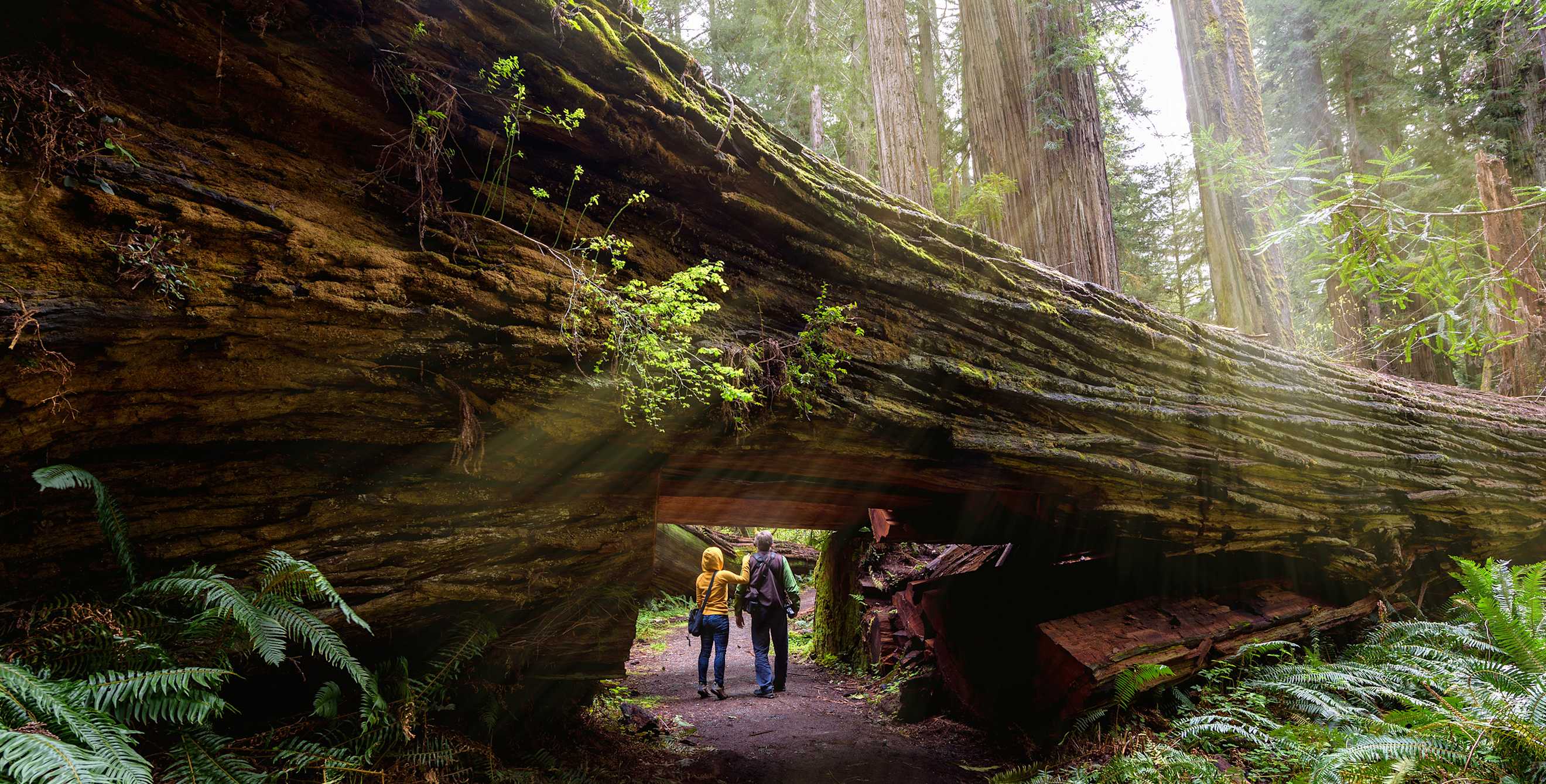
Ancient western inhabitants still live today. The oldest coastal redwoods and giant sequoias have been growing for thousands of years, and many of these astonishing trees were already standing when Columbus set sail.
Coastal or giant redwoods (Sequoia sempervirens) only naturally grow in foggy, damp stretches of California and a small portion of Southern Oregon. Closely related to coastal redwoods, giant sequoias (Sequoiadendron giganteum) are found in higher elevations on the western slopes of the Sierra Nevada. An estimated 93 percent of the regions’ old growth redwoods have been logged, but more than 40 state and national parks protect the remaining groves and offer ample opportunities to stand in awe of these towering beauties and question our place in the universe. Here are the top spots to see them, from north to south.
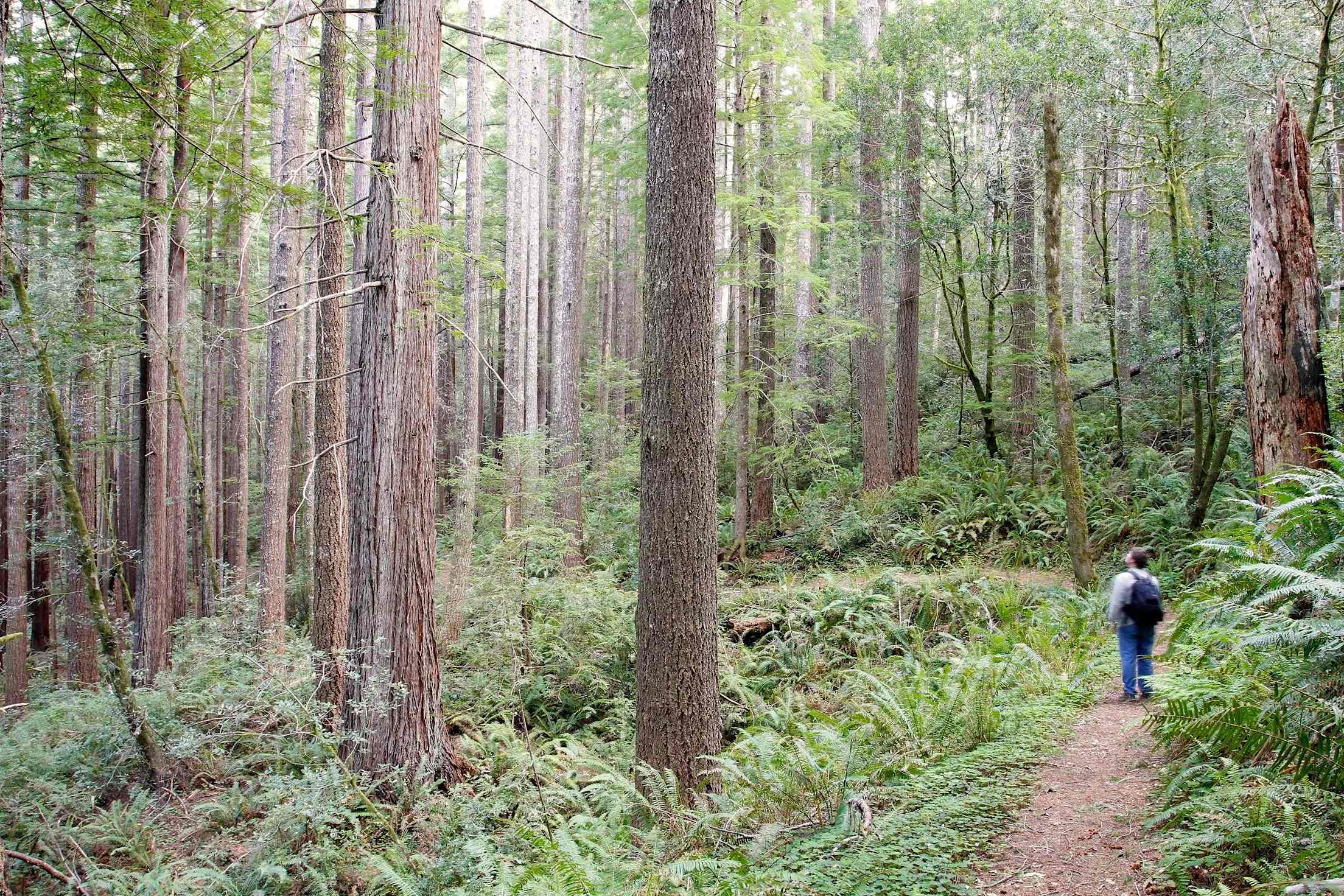
Oregon Redwoods Trail in the Rogue River-Siskiyou National Forest near Brookings, Oregon.
Southern Oregon
The Oregon coast is most often hailed for its craggy coastlines and dense forests that cling to the cliff’s edge, but you can add another reason to visit to your list. Just across the California-Oregon border along Highway 101, you’ll find the Oregon Redwoods Trail, a quiet 1.7-mile-long loop that winds through one of two old-growth redwood groves in the state. Roughly 18 miles north, the Redwood Nature Trail in the Siskiyou National Forest is lined with trees that stretch up to 250 feet tall, and the largest of the bunch are estimated to be nearly 800 years old.
While the Siskiyou grove forms the northern boundary of the West’s old-growth coastal redwoods, you can find 13 rare dawn redwoods nestled in Portland’s Washington Park. Once abundant in the state, this deciduous variety was thought to be extinct until 1944 when it was found in the Sichuan province of China. Visit in the fall to see the needles turn rust-colored and carpet the ground.
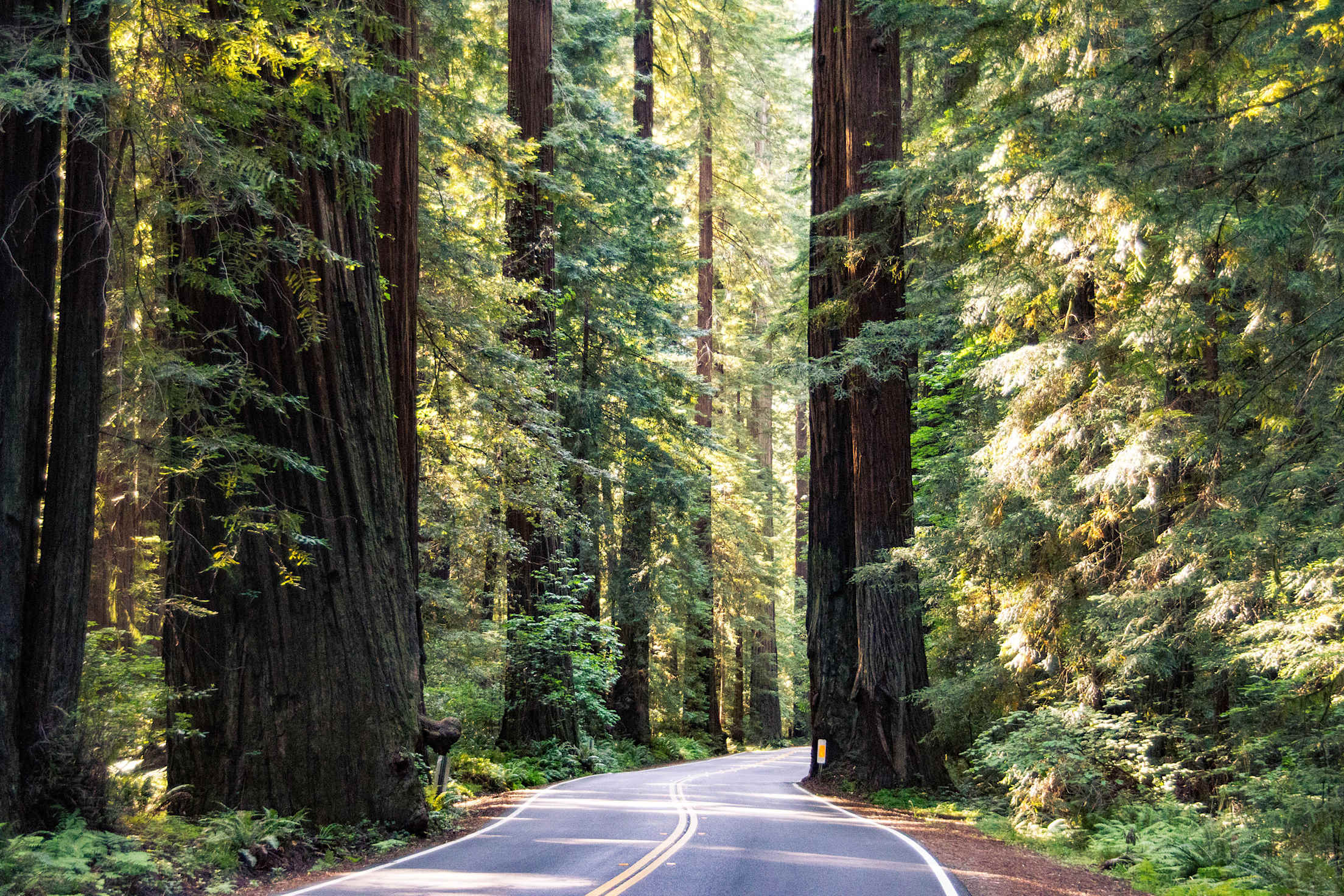
Avenue of the Giants is a scenic road in Humboldt Redwoods State Park that was once part of Highway 101.
North Coast, Humboldt County, California
Just south, this California coastal area is often called Redwood Country thanks to its thriving forests. The area is home to 45 percent of the remaining old-growth redwoods in California, and Redwood National and State Parks shelters some of the tallest trees on Earth. The current leader stands nearly 380 feet tall—that’s 75 feet taller than the Statue of Liberty. While hikes abound, you can also soar through the forest on the SkyTrail gondola in the center of the park. Don’t miss the drive along the lush 32-mile Avenue of the Giants in Humboldt Redwoods State Park where you can catch sight of the albino redwoods that survive with help from healthy trees. Head to the Lost Coast to see the trees shrouded in low-lying fog on the outskirts of the continent.
Smart Tip: Small towns in the area such as Eureka and Ferndale make for great overnight stops, or you can camp beneath the stunning canopy in Redwood National and State Parks, Prairie Creek Redwoods State Park, and Humboldt Redwoods State Park.
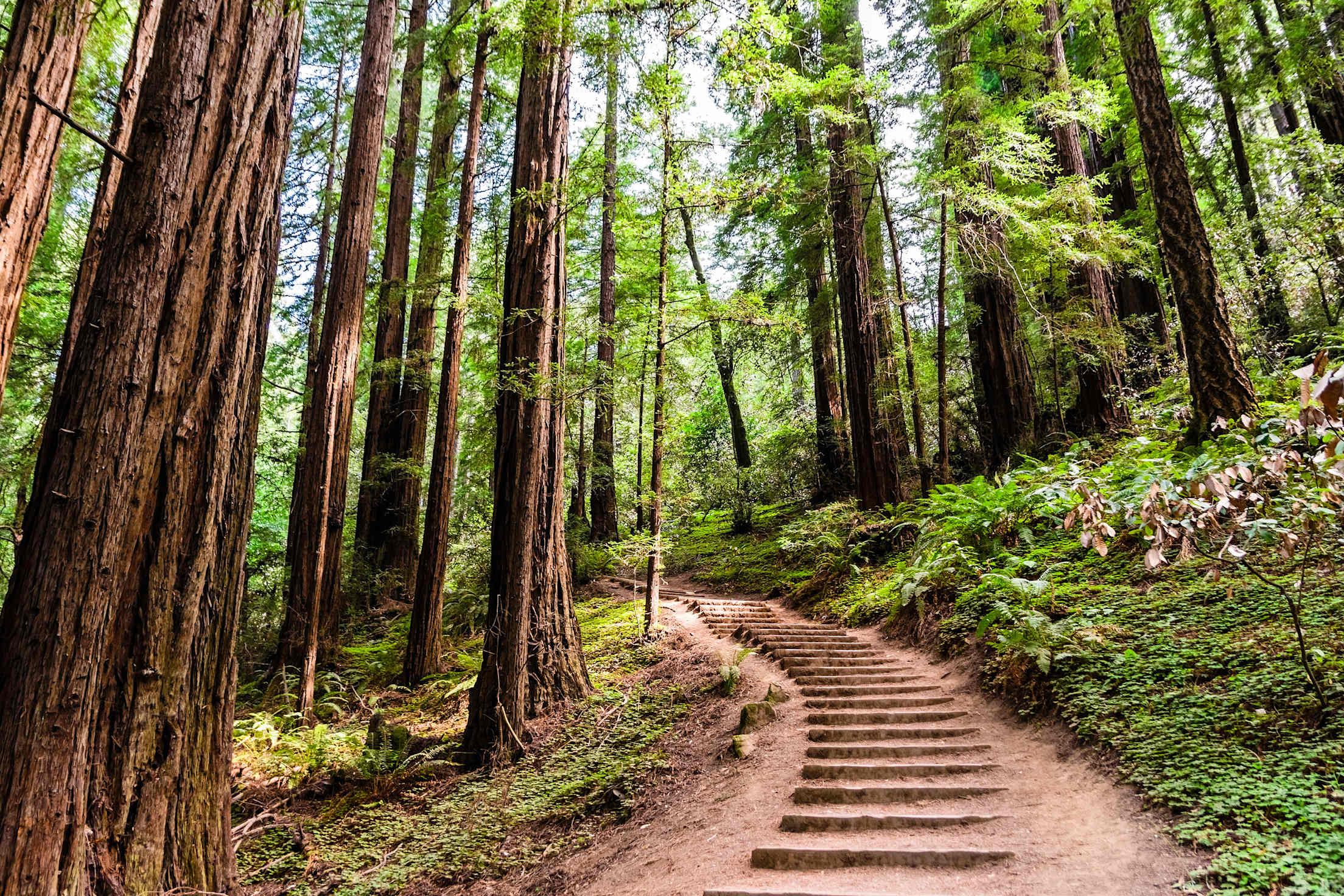
Slip onto a side trail in Muir Woods to find tranquility.
North Bay, California
Marin County’s Muir Woods may be the most famous of the groves that stretch from the North Coast to the valleys just beyond the Golden Gate Bridge. The park, which is part of the Golden Gate National Recreation Area, has proven so popular that parking reservations must be made in advance and some sections can feel more like visiting a major tourist site than pristine nature. But if you bypass the crowds and explore the trails branching off Main Trail (wheelchair accessible and stroller friendly) into surrounding Mount Tamalpais State Park, you’ll be rewarded with panoramic views and solitude. Spend the night in a quiet campsite in Gualala Point Regional Park or overlooking the bay at Mount Tamalpais.
Smart Tip: Take the Golden Gate Ferry to Sausalito and hop on Marin Transit’s Muir Woods Shuttle to visit the park from San Francisco without a car.
Mendocino and Sonoma counties marry disparate iconic state scenery—think rolling golden hills covered in vineyards and damp forests thrust against the rocky shoreline. In Mendocino, take a ride on the Skunk Train through thousand-year-old redwoods and discover cascading waterfalls and throngs of seaside wildflowers.
San Francisco and Oakland
City-lovers rejoice: Redwoods are hidden throughout San Francisco and Oakland, from a small group at the Transamerica Building in San Francisco’s bustling Financial District to the aptly named Redwood Regional Park in Oakland.
Less than 30 minutes from downtown in the Oakland Hills, Redwood Regional Park features the Stream Trail, a 5.4-mile stretch that soothes walkers with babbling water and verdant second-growth redwood groves.
Back across the bay, stately redwoods hide out in the Sunset District’s Stern Grove and Golden Gate Park’s Hoover Redwood Grove. In the Presidio, see one of the shortest, youngest groves. In 2019, 75 redwood saplings, cloned from ancient, living tree stumps, were planted together in the park in the hopes that they may also reach 300 feet or more in the future like their predecessors.
California Central Coast
The coastal Santa Cruz Mountains are dotted with old-growth stands and hidden nature spots. The 4,300 acres of redwoods at Big Basin State Park are the most well-known of the bunch, but smaller parks, including Butano State Park, Henry Cowell Redwoods State Park, Wilder Ranch, and The Forest of Nisene Marks State Park, delight visitors with near-empty trails, ample birdsong, and cooling canopies. The daring can fly through the trees on six ziplines connected by two sky bridges or find their balance at the aerial adventure park at Mount Hermon.
As you continue south on Highway 1, drive through redwoods that seemingly form a tunnel over the highway on your way to Big Sur. Pull off and explore the California coastal redwoods at their southern terminus. Pfeiffer Big Sur State Park offers some of the best views and redwood hiking in the area. When you’re done, rest your feet in the Big Sur Lodge or make camp at one of the gorgeous spots on site (reservations required).
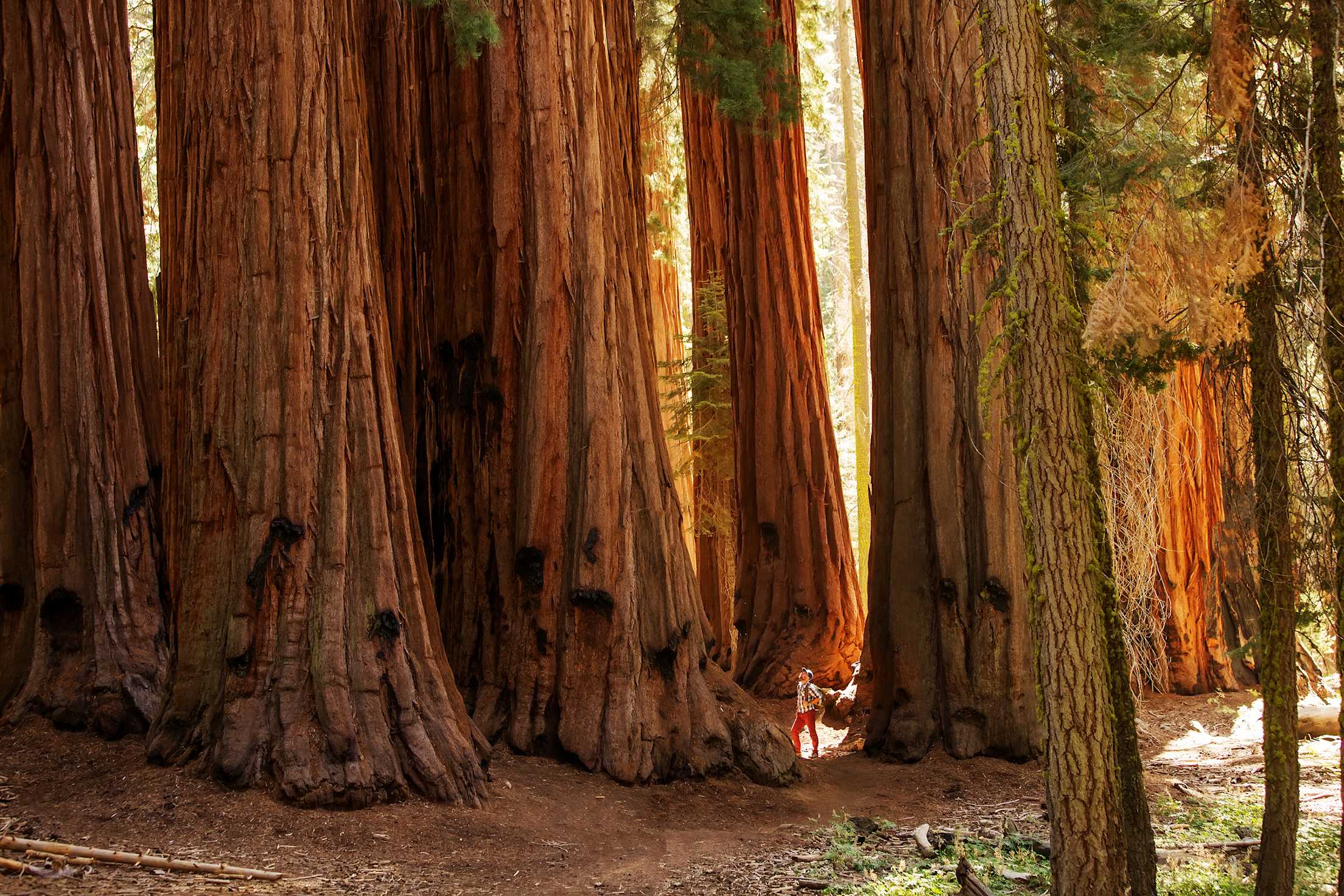
A hiker stands in a grove in Sequoia National Park.
Western Sierra Nevada
Among the mountains, massive giant sequoias thrive. While they are often shorter than coastal or giant redwoods, giant sequoias, also called Sierra redwoods, are typically larger and substantially outweigh redwoods. The largest living organism on Earth, the General Sherman tree, is a sequoia that stands more than 100 feet wide and is estimated to weigh 2.7 million pounds.
Yosemite National Park protects three ancient groves. Mariposa Grove is the largest with 500 mature giant sequoias. Located near the South Entrance, it’s also the busiest of the bunch. Tuolumne Grove is more remote and home to 24 or so mature trees. The Merced Grove east of the Big Oak Flat Entrance is similar in size to Toulumne, but visitors must hike 1.5 miles to catch sight of the sequoias and parking is extremely limited.
Sequoia and Kings Canyon National Parks offer some of the best spots to see the behemoths, including the General Sherman tree. Stand below it or take a free park shuttle in the summer to see its size from a distance. Grant Grove and Giant Forest house the largest sequoia groves in the park and are a must-see.